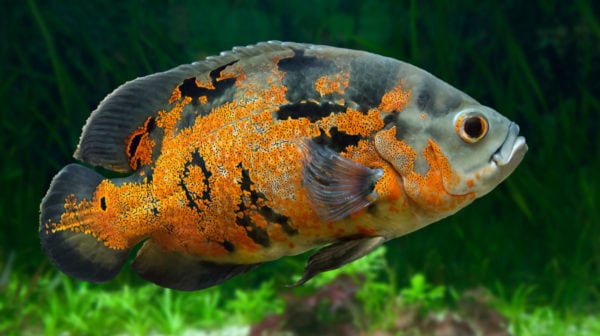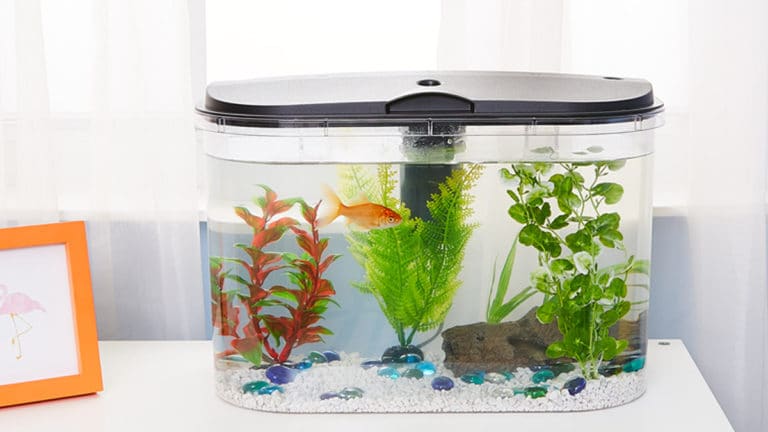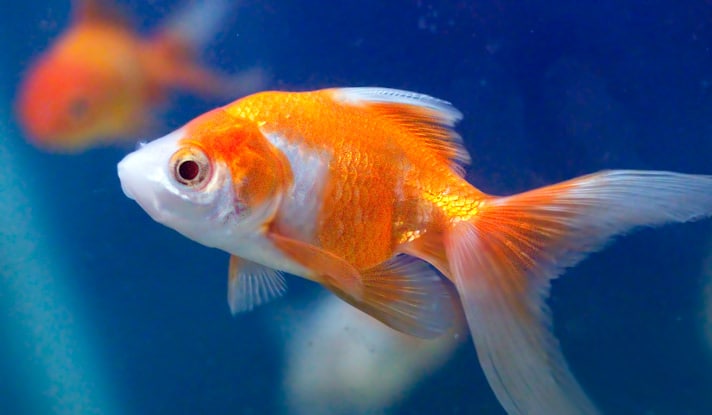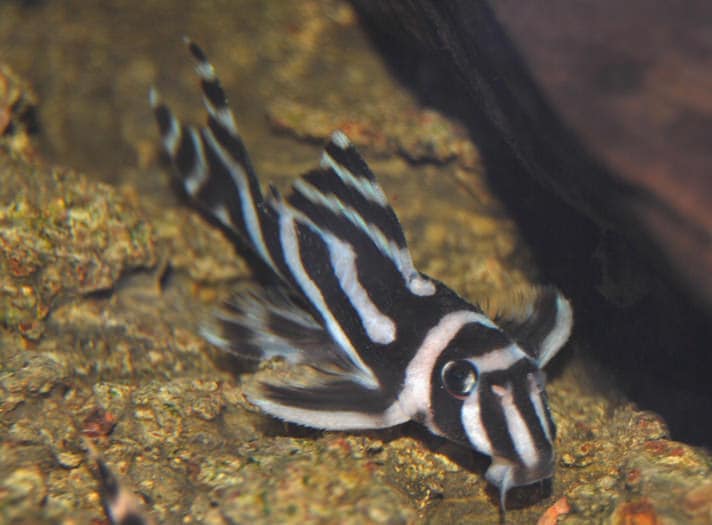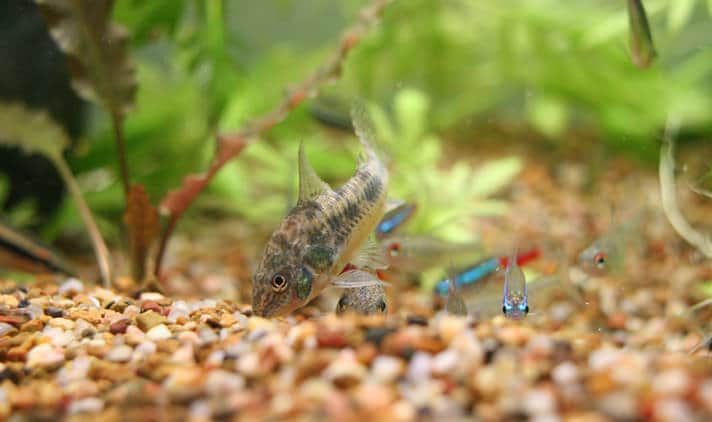If you keep the oscar fish (Astronotus ocellatus), you probably know that it is a large cichlid that is not for every aquarist. Oscars do often breed in the home fish aquarium — and if you’re ready for this step, you can follow some basic instructions to breed them and raise the oscar fry successfully. It is a lot of work but is well worth it. Make sure you have a breeding pair of oscar fish adults, and then you can move on from there.
1. Acquire Adults and Sex Them
It’s a thrill when oscar fish breed for the first time. If you’ve been keeping oscars a long time, odds are pretty good that you’ve raised a breeding pair. If you don’t have large adults, you may be able to find some at your local fish store. Oscar fish are often brought back to the fish store after the 1-inch juvenile they purchased grew too big for their aquariums or bullied the other fish in the aquarium. So, if you find adults at the store, how do you pick out fish that are a possible breeding pair?
Oscar fish reach sexual maturity at about 14 months when they are 6 to 10 inches long. Size is not reliable, and even age cannot be counted on for getting results. Many mature oscars refuse to spawn until they are 2 or even 3 years old.
The only certain way to sex oscar fish is by looking at the breeding tubes. In the female, the tube (ovipositor) is short, stubby and flat at the tip as though sliced off, and about as long as it is wide. The male’s breeding tube is about a third the mass of the female’s tube, very thin, curved and comes to a point; its length is far greater than its width. The tubes are only apparent just before spawning. You will have the best chances if you find a proven breeding pair of oscar fish in a pet shop at a good price.
2. Provide Adequate Conditions
With a pair of oscar fish in hand, the next important consideration is aquarium size. A 55-gallon fish aquarium is minimal for a pair of 6-inch oscar fish, but a 70-, 90-, or 125-gallon aquarium is much better. A good rule is not less than 10 gallons to the inch of the larger adult fish. (Except if the fry are to be hatched and raised separately, a 55-gallon aquarium would be the minimum for the parents and another 55-gallon aquarium for the fry.) The aquarium should have a glass cover weighed down with a potted plant, brick or other heavy weight, and the overhead light should be protected from splashes.
Aquarium filtration must accommodate the enormous waste produced by oscar fish. My suggestion is to begin with a double-outlet, powerhead-driven undergravel filter weighted with heavy rocks beneath a 1-inch or more layer of gravel. You’ll also need a large canister filter with ammonia-removing zeolite and a hang-on-the-back filter with fiber foam and activated carbon. Commercial breeders use trickle filters. A simple, inexpensive trickle filter can be constructed with a powerhead, a 5-gallon bucket and a quantity of plastic bioballs.
Plants won’t last. Large rocks, clay flowerpots, or large diameter PVC pipe should be provided as refuges. Either the male or female oscar fish can become aggressive before and after spawning. A section of aquarium bottom should be supplied with a very wide flat rock or piece of slate about 8 to 12 inches in diameter.
3. Feed Them Well
An enriched diet is needed to induce ripening of the oscar fish eggs, which includes the transfer of essential omega fatty acids and other nutrients from the mother. Breeding pairs on inadequate diets produce eggs that fail to hatch, weak fry unable to transform from the wriggler to the swimming stage or fry that fail to develop their organ systems and die during the first week after becoming free-swimming.
Oscar fish accustomed to cichlid pellets, live goldfish or any other narrow diet may have difficulty recognizing new fish foods. Don’t expect an oscar to immediately accept unfamiliar fare, no matter how nutritious. Pelleted fish food can be continued as a staple, but the breeding diet should include both whole small fish and invertebrates. The invertebrate portion should include aquarium snails, edible food shrimp from the supermarket (exoskeletons on), and earthworms from your backyard or a bait shop.
Many breeders use frozen adult brine shrimp, live crickets, thawed beef heart, trout chow, live black worms or freeze-dried euphausiid shrimp (ocean plankton). Mealworms are nutritious, but too messy and not popular.
4. Provide The Right Water
With all that fish food, water changes become mandatory. Fish tank filters are helpful but can’t deal with the load for more than a few days at a time. Change 25 to 50 percent of the aquarium water at least once a week (more often is better).
Oscar fish eat and grow well at 76 to 78 degrees Fahrenheit, but spawning is triggered by elevating the temperature to 82 to 85 degrees Fahrenheit. This requires large aquarium heaters (not less than 5 watts per gallon). Unfortunately, oscars think heaters are toys to be tossed about and smashed into the aquarium’s sides. Select a single, large, solid state submersible heater with a dialed temperature control and no less than five adhesive tabs for locking it onto the side of the aquarium. Other options for protecting the heater are gluing sponge rubber onto the aquarium glass adjacent to the heater or locking the heater inside a PVC tube jammed between very large immovable rocks.
5. Breeding Begins
The best trigger to spawning is a combination of new and larger quarters, increased temperature, an enriched diet and water changes. When the oscar fish are ready to spawn, they’ll begin gill flaring, fin spreading, side-by-side wagging, tail-slapping, vibrating, and jaw locking and shaking. One or both will clear the gravel from a flat rock and begin scrubbing the surface. Rock cleaning may go on for days or weeks. Spawning is imminent when the female’s ovipositor descends. When the male’s breeding tube appears extended shortly thereafter, spawning can be expected to begin within 48 hours.
With both parents’ colors intensified, their tubes down and the two oscar fish vigorously scrubbing the flat rock, the first signs of spawning are false passes by the female over the rock. After a few tries, the first eggs are laid, and the male makes a following pass over the eggs. The adhesive eggs are about a millimeter in diameter and opaque white, resembling dead eggs of other fish. Spawning takes about three hours, resulting in a 6-inch or larger patch of evenly spaced rows of eggs. Small fish may produce 300 to 500 eggs on their first spawning. Larger female oscars (10 to 14 inches) may produce 2,500 to 3,000 eggs.
6. Caring for Developed Eggs
Both parents guard the nest, but the female oscar fish does most of the fanning to keep them from being smothered by sediments. She also mouths them, probably to coat their surfaces with antibacterial mucus (many fish secrete antibacterial oral mucus, such as bettas), as well as removing and eating the infertile eggs.
The oscar eggs hatch in two to three days, and the fry are now called “wrigglers” by aquarists or prolarvae by biologists. Dr. Harry Grier of Florida studied them under the scanning electron microscope (Grier, H. 1981. “Cement Glands and the Post Hatching Development of the Oscar.” Freshwater and Marine Aquarium. Sierra Madre, California. 4(2):26-32). The prolarvae are most unfishlike, with no fins, no eyes, no mouth, in fact nothing but a yolk sac. On top of the head are three pairs of tiny glands that secrete a sticky filamentlike cement attaching the fry to the rock. After about 24 hours, the prolarvae begin developing incipient eyes and tiny buds and ridges where the future fins will be. There is still no sight, no hearing and no other sensory capability. On the second or third day, the mouth begins to form. Then the eyes become recognizable and pigmented, and the yolk sac is much reduced. The fry are still stuck by secretions of the cement glands and rearranged by the parents into clumps. Very soon, they are moved off the rock into a pit constructed in the gravel. The parents subsequently move them to a second and sometimes a third pit during the next five to seven days. About 10 days after spawning, the fry become sighted, the lateral line pores appear, the cement glands stop secreting and the glue breaks under the strain of the tiny beating tails. The oscar fish fry become free-swimming and are ready to feed.
7. Artificial Incubation
In many cases, the breeders go through false spawnings for months or even a year before actually producing eggs. The solution to that problem is patience. Sometimes, the parents eat the fry. And sometimes they breed in a large community aquarium where other fish eat the eggs or fry. In these cases, artificial incubation is the solution.
Remove the flat rock that the eggs are laid on from the aquarium (be prepared to be viciously attacked) and place it on its side in a 10-gallon aquarium with dechlorinated water. Arrange an airstone to play a gentle stream of bubbles adjacent to the eggs. Add an antimicrobial to the water such as acriflavine (2 drops per gallon) or methylene blue, which darkens the water. This protects against flagellates and other single-celled organisms with supplemental chloroplasts (such as velvet and its relatives). Instead you could add formalin (one-tenth of a milliliter or 2 drops of 37- to 40-percent formaldehyde solution per gallon). Change water when the eggs hatch, and don’t feed until the fry are free-swimming. Change water constantly (a fourth of the water a day).
If you remove the eggs for artificial hatching and rearing of the fry, the parents will spawn again in two to six weeks. If you continue to remove eggs, they will continue to spawn. For most aquarists, that is too many fry to raise or take to pet stores — and too much work.
8. Caring for and Selling Fry
The oscar fish fry should now be siphoned into a bucket for transfer to a 10- or 20-gallon bare aquarium with sponge filtration and vigorous aeration. Reduce the temperature to 78 degrees Fahrenheit. Begin feedings of newly hatched brine shrimp (Artemia nauplii) not less than twice a day, with five or six feedings a day for optimal growth. The small aquarium keeps the fry within visual range of the food, so none is wasted. If the fry don’t get enough food during the first week, they begin starving to death. The oscar fish grow fast, and by the second or third week are ready for flake foods. Grier described them as “swimming stomachs with a fin at each corner and a mouth in the front.”
Growth is phenomenal but uneven, and the young oscar fish must be separated by size to minimize cannibalism. They reach an inch in anywhere from four to seven weeks. This is commercial size, and the aquarist can now offer them to the local pet store in exchange for credit.
Although it may take a long time for your oscars to breed, stay patient, and be prepared to lose some eggs or fry once they do breed. The large aquarium required to keep oscars and the hard work that comes with breeding them is worth it once you see healthy, growing fry. Good luck in breeding these wonderful fish!
Posted by: Chewy Editorial
Featured Image: Ekaterina V. Borisova/Shutterstock.com
Share:
